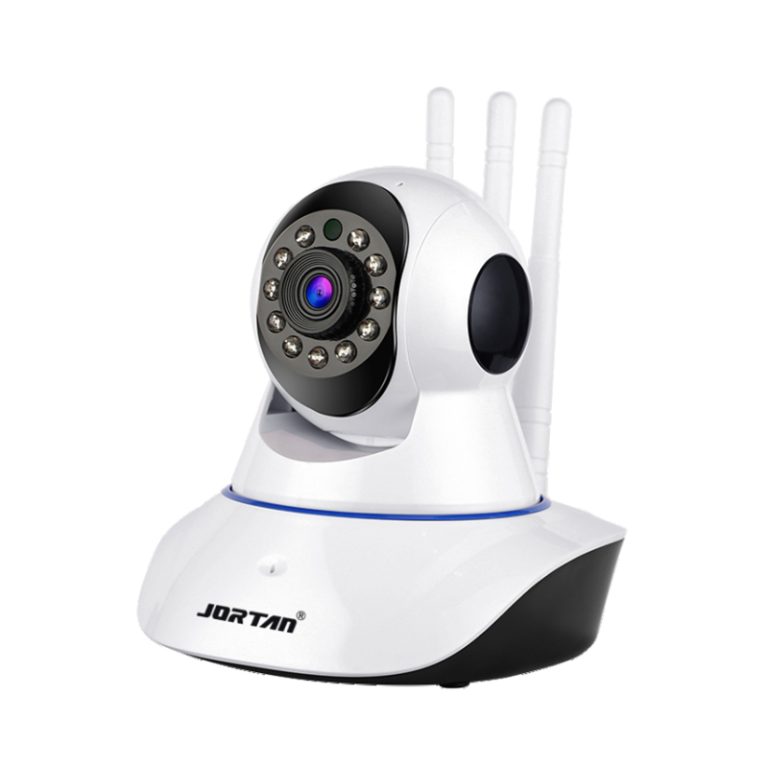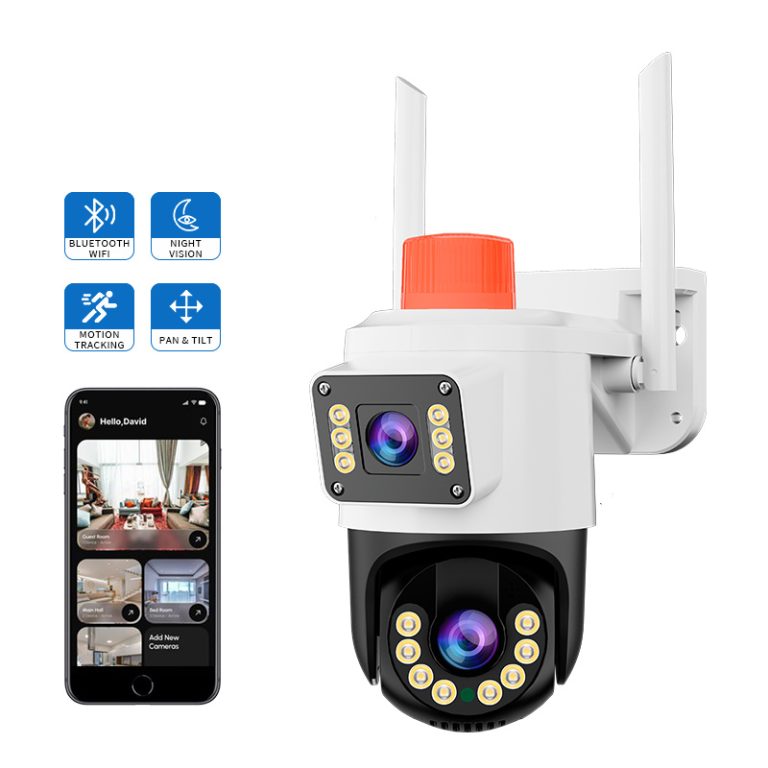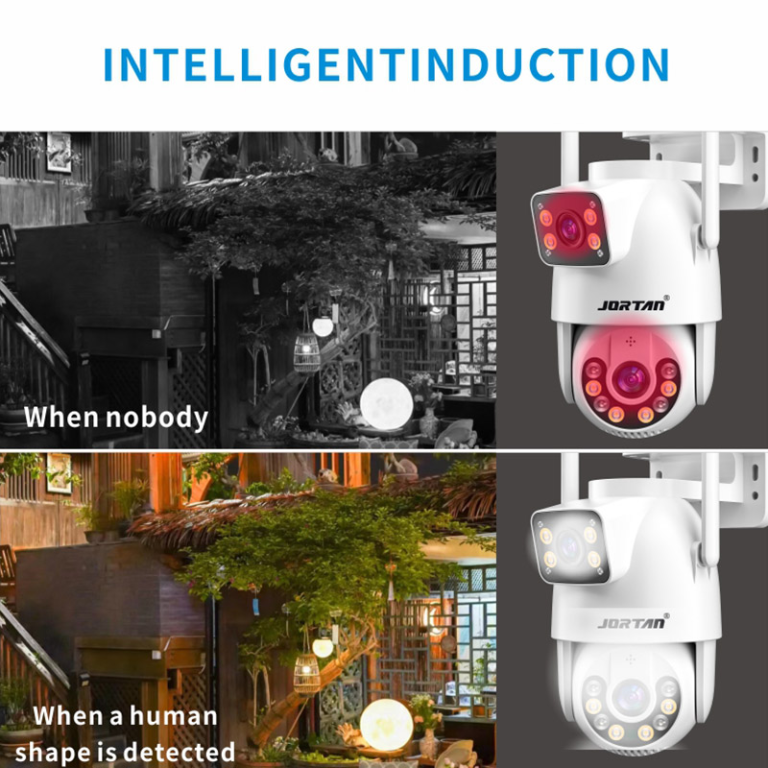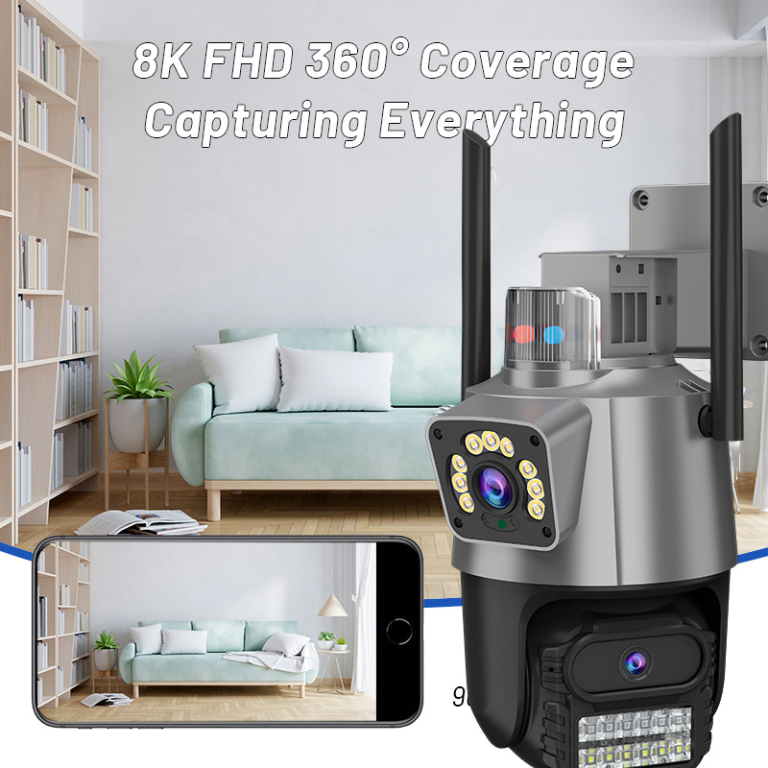Homeowners and businesses need to select the appropriate security camera system because we live in an era of smart homes and sophisticated surveillance systems. The market features two leading security camera options which include wireless WiFi cameras and wirefree security cameras. The two types of cameras share a common name but they operate with distinct capabilities and installation requirements and performance characteristics. Homeowners and businesses need to understand these distinctions to pick the right surveillance solution for their needs.
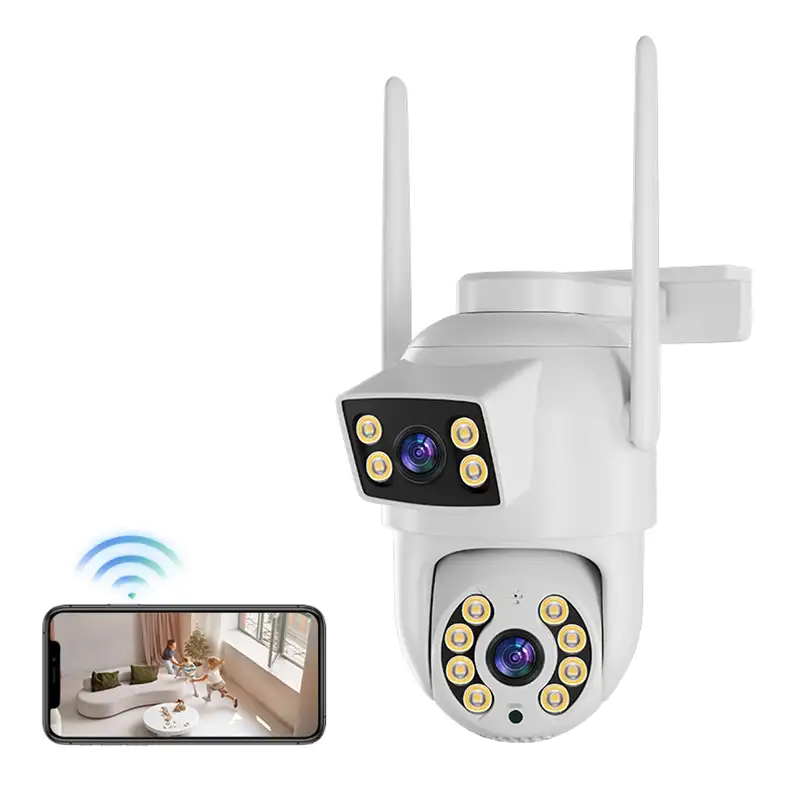
Defining Wireless WiFi Cameras and Wirefree Security Cameras
The first step requires understanding the difference between these two technologies.
What Is a Wireless WiFi Camera
A wireless network camera transmits video via WiFi or 4G mobile networks, eliminating Ethernet cables while still requiring power. It differs from traditional network cameras by its wireless transmission methods, with two main types: WiFi and 4G models.
What Is a Wirefree Security Camera
Wirefree security cameras operate independently without cables, using internal power sources or solar panels for power and data transmission. They are ideal for locations where wiring is difficult or impractical.
Power Source and Installation Requirements
The power supply system determines which locations and methods each camera type can operate effectively.
How Wireless WiFi Cameras Are Powered
The Wireless WiFi host enables wireless connection for these cameras. The Wireless WiFi host connects to a router through an Ethernet cable while providing an HDMI-like connection to a monitoring display. The majority of models need DC12V/2A power adapters to maintain continuous operation. power supply: DC12V/2A.
How Wirefree Security Cameras Operate Without Cables
Wirefree cameras use rechargeable batteries and solar panels for power, with advanced models combining solar charging and battery storage to ensure continuous operation during cloudy days. This design frees them from relying on nearby electrical outlets.
Installation Complexity and Flexibility
Wireless WiFi cameras need to stay close to power sources and WiFi signals for proper operation which restricts their installation locations. The wirefree camera design provides complete placement freedom because users can install them anywhere without needing to consider power cables or electrical outlets.
Internet Connectivity and Data Transmission
The two systems use wireless technology but operate with different approaches to network management.
Role of WiFi in Wireless Camera Systems
The wireless system uses IEEE 802.11b/g/n standards on the 2.4–2.4835 GHz band, with security via WEP (64/128-bit), WPA/WPA2, and WPA-PSK/WPA2-PSK protocols. It supports transmission rates of 11Mbps (11b), 54Mbps (11g), and 150Mbps (11n), ensuring reliable video streaming on residential networks.
How Wirefree Cameras Transmit Data
Wirefree units send footage to cloud storage and mobile apps through WiFi or cellular networks which operate at 4G LTE speeds. The units operate independently from physical infrastructure which makes them suitable for areas that lack broadband internet access.
Bandwidth Considerations and Network Stability
The operation of both systems requires fast internet speeds and strong signal reception. The bandwidth of either system becomes limited when multiple devices attempt to stream high-definition content at the same time.
Recording and Storage Capabilities
Data handling represents a vital element which distinguishes these systems from each other.
Local Storage vs Cloud Storage Options
Storage options include up to 256GB on a local TF card and cloud storage. Most wireless WiFi cameras offer dual recording with local SD cards and cloud backups, while wirefree models primarily rely on cloud storage due to onboard memory limitations.
Continuous Recording vs Motion-Activated Recording
Wireless WiFi cameras enable continuous recording because they maintain a steady power supply. The main distinction between wirefree cameras and other models exists in their recording behavior because they use motion detection to save battery power which results in limited footage availability during emergencies.
Integration with DVR/NVR Systems
The integration of wireless systems with DVRs/NVRs becomes possible through ONVIF protocol support in certain systems. ONVIF: support. The system enables businesses to manage multiple feeds from a central location which benefits organizations that require extensive surveillance systems.
Battery Life and Maintenance Needs
The management of batteries directly impacts the extended operational capabilities of wirefree systems.
Battery-Powered Design of Wirefree Cameras
The design of wirefree models focuses on energy efficiency through motion detection zones and sleep modes which help batteries last for weeks between charging sessions based on user activities.
Power Supply Options for Wireless WiFi Cameras
The devices need traditional AC adapters or POE (Power over Ethernet) in hybrid configurations but they need a wired power connection to function as “wireless” devices.
Maintenance Frequency and Long-Term Reliability
The battery life of wirefree units depends on usage patterns because they need either regular charging or battery replacement but wired units provide steady operation with limited mobility because of their fixed position.
Video Quality and Performance Metrics
Users in the present era require images that remain visible under all environmental and illumination situations.
Resolution Differences Between the Two Types
Wireless WiFi models provide better image quality through HD204815362 resolution output because they support HD2048 * 1536 * 2 resolution while most wirefree models are limited to Full HD because of bandwidth restrictions from battery-saving protocols.
Frame Rate, Night Vision, and Audio Features Comparison
The system supports a refresh rate of 1–30 times per second, features IR-CUT filters for full-color infrared and day-night switching modes (full-color night vision, infrared night vision, and intelligent full-color modes), and enables two-way audio communication via G.711A codec for synchronized voice and video.
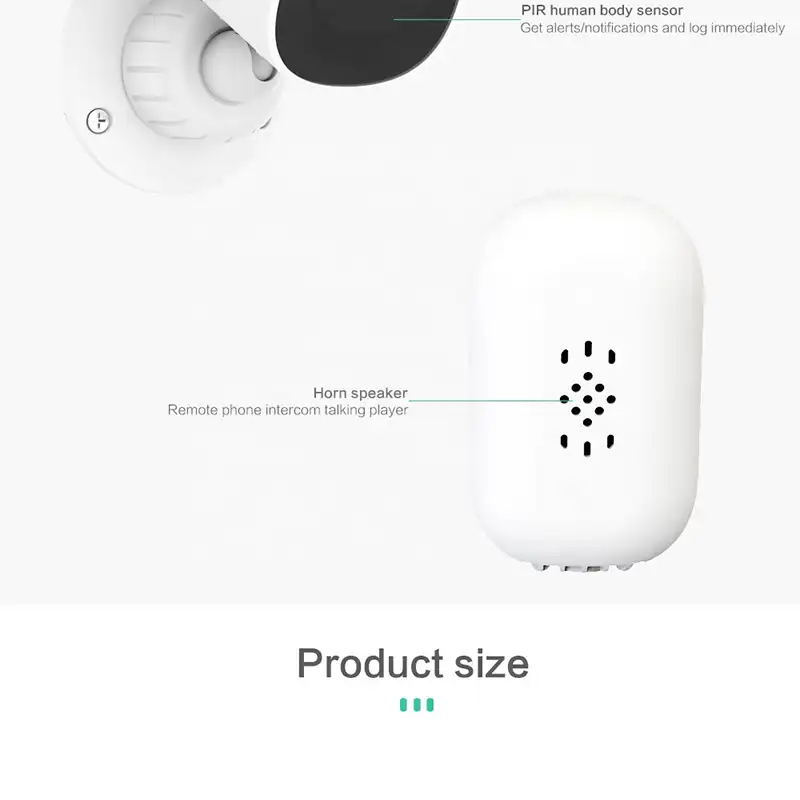
Use Cases and Environmental Suitability
The system selection depends on the specific needs of each situation through practical implementation.
Indoor vs Outdoor Applications
The IP66 waterproof rating of outdoor-rated wireless units allows them to function in harsh weather conditions. The indoor wirefree units work best for short-term monitoring purposes such as babysitting or pet care.
Mobility and Temporary Deployment Scenarios
Wirefree systems provide excellent performance in mobile applications such as construction sites and camping areas and temporary surveillance needs that require instant setup without existing infrastructure.
Scalability for Home or Business Use
The scalability of NVR-based wireless systems makes them suitable for business applications yet wirefree systems work best for small homes because they require no initial investment or complicated setup.
Cost Comparison and Value Over Time
The total cost of ownership includes operational expenses that extend beyond the first purchase price when making buying choices.
Initial Purchase Price Breakdown
Wirefree models have higher initial costs because they contain built-in batteries and sensors yet they function without needing DVRs or NVRs unless they are part of a broader system.
Long-Term Operational Costs
Cloud service subscription fees increase costs for both systems, with the greatest impact on users storing data remotely without local backups, unless they regularly download via the ICSEE or YOOSEE mobile apps. The platform, named YOOSEE in both Chinese and English, allows monitoring through iOS and Android applications.
Privacy, Security, and Remote Access Features
The selection of surveillance technology must always protect security at all costs.
Encryption Standards and Data Protection Measures
The two types of wireless networks use WPA/WPA2 encryption standards to maintain network security during transmission. Security: 64/128 – bit WEP, WPA/WPA2
App Compatibility for Monitoring
Jortan’s IP products work with ICSEE APP & YOOSEE APP and monitor mobile devices running iOS and Android systems and Chinese users can access YOOSEE through their mobile devices to receive instant push notifications when motion detection occurs and users can track objects while receiving alarm messages.
Alerts, Notifications, and Smart Home Integration
The system sends instant smartphone alerts and supports voice control via Alexa or Google Home on compatible models from manufacturers like Jortan Group (Zhejiang Jortan Electronic Technology Co., Ltd.), founded in September 2013, specializing in technological innovation.
Introducing Jortan as a Trusted Surveillance Solutions Provider
Jortan stands as a leading manufacturer which provides customized solutions that meet different user requirements through its range of home monitoring kits and commercial-grade deployments with AI tracking features.
IP Camera Offerings Compatible with ICSEE APP & YOOSEE APP
The product range includes IP Cameras which enable users to monitor their devices through iOS and Android mobile applications under the brand name YOOSEE. The product range includes dual-lens models with high resolution and wide dynamic range imaging that works well in both indoor and outdoor settings.

Monitoring Packages Including DVRs and NVRs for Flexible Setup Needs
The Monitoring Package…OEM/ODM services provide logo customization and packaging design options which make the product suitable for businesses expanding their security systems.
Solar-Powered Dual Lens Cameras for Off-Grid Surveillance
All products receive thorough testing to guarantee zero defects before they reach customers. The environmentally friendly solutions operate independently in areas without power access because they do not need electricity to function.
Conclusion
The power requirements of wireless WiFi cameras are essential for their operation yet they provide easy network integration with continuous recording capabilities suitable for permanent installations that need reliable uptime. The battery-powered and solar panel-operated wirefree security cameras provide unmatched flexibility through motion event-based operation which makes them suitable for temporary installations and locations that are difficult to wire.
FAQs:
Q1: Are wire-free security cameras reliable for outdoor use?
A: Yes! Modern wire-free cameras have IP66 ratings, protecting them from rain and dust for reliable outdoor performance.
Q2: Can wireless security cameras be viewed remotely?
A: Absolutely! Jortan’s ICSee and YOOSEE apps allow live video streaming and motion alerts on smartphones from anywhere.
Q3: Do wireless WiFi and wire-free security cameras require professional installation?
A: No! Most systems, like Jortan’s, offer easy-to-use apps and versatile mounting tools for simple, DIY installation.

